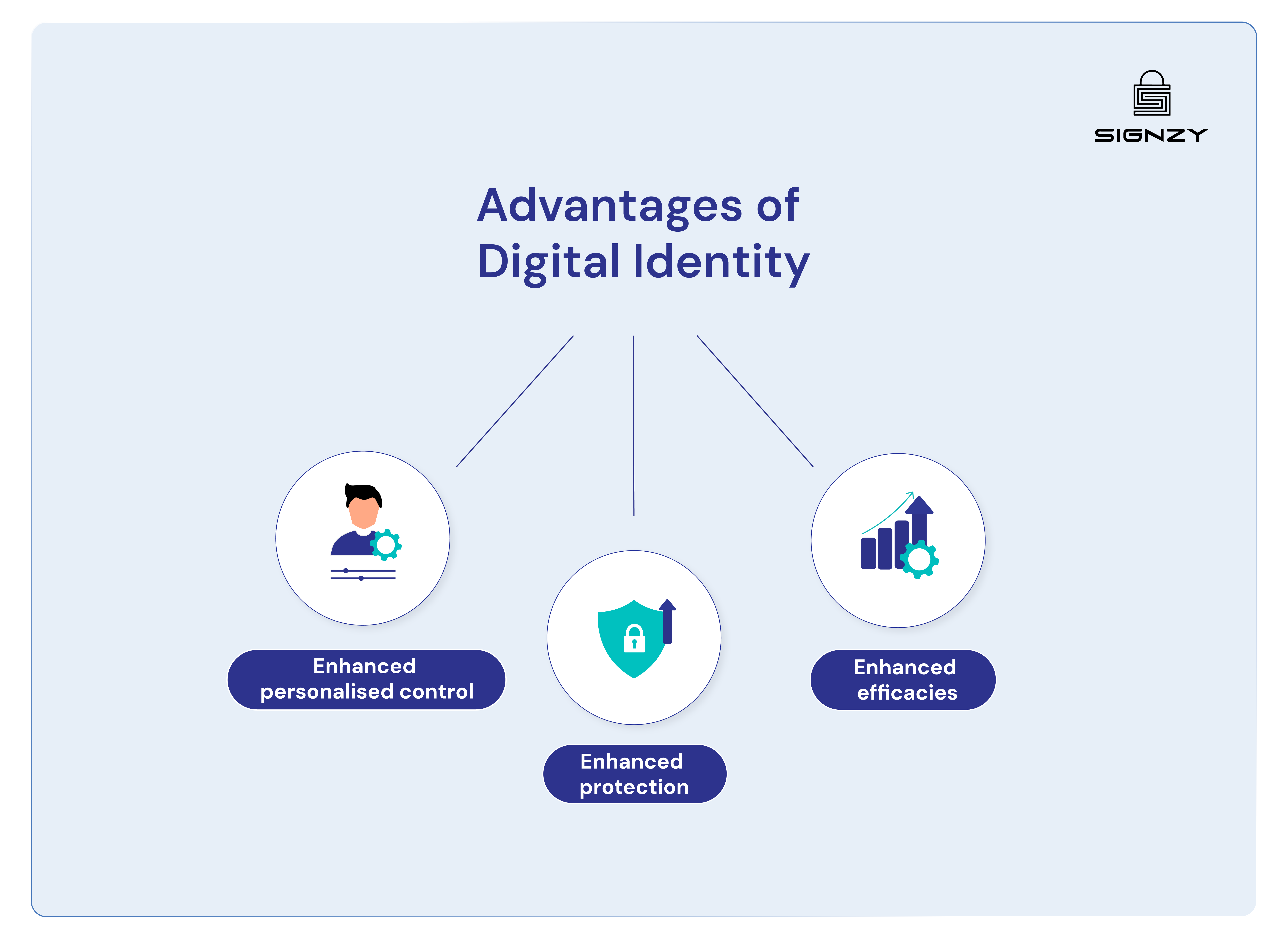Digital Identity for Financial Services: A Complete guide
In the ever-changing financial services sector, digital identification and authentication have become very important.
As the digital realm becomes more and more integrated into our daily lives, there is an increasing need for authentication systems that balance security and user-friendliness.
Conventional methods such as PINs and passwords face scrutiny because of their security and usability flaws.
And therefore, these days, a lot of financial services organisations are working to strengthen their digital identification capabilities.
They are basically trying to replace conventional, in-person verification procedures with digitally enabled ones.
How?
By implementing more robust authentication and verification techniques.
Additionally, they have been improving their procedures for monitoring transaction fraud and authentication.
Data and AI: A New Future Altogether
In the financial services sector, it is essential to strike the correct balance between security and user-friendliness using risk-based authentication.
This approach is commonly regarded as a best practice for online payments.
Why?
Because it uses real-time algorithms to assess the possibility of transaction fraud.
These algorithms operate seamlessly in the background while:
- Evaluating risks
- Enabling prompt judgments during payment processing
- Determining if extra user authentication is required
The quality of input data and algorithm optimization are two critical components that determine how successful risk-based authentication is.
What is digital identity and why is it important?
The term “digital identity” describes the credentials that are given to a particular consumer for digital verification and that enable them to use digital banking services.
Digital identity in financial services, as opposed to traditional identity verification, allows for additional types of verification beyond official identification documents, such as biometrics and device-specific validation.
As per McKinsey’s report 2019, about one billion people worldwide lack a legally acceptable form of identity (for example, a government-issued ID) and as a result, many of these people are unable to access essential financial services.
It was estimated then that the use of digital identification solutions may generate value equivalent to up to 13% of world GDP by 2030.
A 2022 report published by McKinsey categorizes digital identity as a “digital-trust technology” that “characterises and distinguishes an individual’s identity” in digital settings.
The report lists several important advantages of digital identity for clients and financial organisations, a few of which have been described in brief below.

1. Enhanced Personalised Control
Clients have far more control over the financial goods and services they use when they can authenticate themselves without any intermediary.
Financial organisations take a more detached stance when it comes to identity verification in transactional operations like loans and payments thanks to digital identities.
2. Enhanced Protection
Password protection is no longer sufficient to secure digital financial information.
Why?
Due to the increasing sophistication of cybercriminals’ tactics.
Financial organisations can provide new ways to implement multi-factor authentication, including needing a password and biometric verification, in order to access an account thanks to digital identities.
3. Enhanced Efficacies
Passwords for internet access or in-branch verification are two examples of traditional identity verification methods. But the problem is they are not always effective.
Financial organisations can cut down on inefficiencies by allowing clients to choose the verification method that best suits their requirements and preferences thanks to digital identities.
In the digital era, digital identification is essential to the security of financial services.
With the increasing number of financial transactions happening online, it is imperative to provide a safe and trustworthy way to confirm users’ identities.
Why is digital identity important in financial services security?
Protecting client data is crucial in this technology-driven world.
Strong security protocols, including multi-factor authentication, blockchain technology, and encryption, strengthen the way that client identities are managed and stored.
Clients have now more control over their information while data integrity is guaranteed using decentralized storage techniques. The defence against cyber threats and illegal access is further strengthened by adherence to industry standards and ongoing monitoring.
Digital identification is crucial for financial services security for many reasons.
Firstly, it helps to stop fraud and identity theft.
Secondly, it helps to verify that the person accessing the service is who they claim to be.
These ultimately avoid fraud and identity theft, which can have negative consequences for the financial organisation as well as the victim of identity theft.
The fact that digital identification facilitates regulatory compliance is another factor contributing to the security of financial services. Financial organisations are required by law to confirm the identity of their clients to stop money laundering and other illicit activities.
Financial organisations can employ digital identity verification to abide by rules, stay out of trouble with the law, and save money.
Difficulties in digital identity verification
Digital identification is crucial for protecting financial services, but its effectiveness depends on overcoming several obstacles.
Finding the right balance between security and good user experience is one of the hardest problems to solve.
Making the procedure as easy as possible for clients is just as important as having a safe way to confirm the identification of those gaining access to financial services online.
Preserving personal information and maintaining privacy provide another difficulty. Digital identity verification usually necessitates the acquisition of sensitive personal data, such as social security numbers and biometric information.
It is critical to guarantee the confidentiality of this data and its exclusive use for identity verification.
Digital Identity Verification Solutions
Notwithstanding the above-described solutions, there are some ways to enhance and guarantee the efficacy of digital identity verification. Using biometric information, such as fingerprints or face recognition, to confirm identities is one way to solve the problem.
Biometric data is a more secure alternative for digital identity verification since it is harder to falsify than other types of identification.
Using blockchain computing to develop a decentralized digital identification system is an additional choice. Blockchain computing can contribute to the security and privacy of confidential information by letting people manage their data and decide who can access it.
This can improve the reliability of digital identity verification while simultaneously lowering the threat of identity theft.
Lastly, increasing the efficacy of digital identity verification may be facilitated by using services for digital identity verification. These services verify the identity of users of digital services via machine learning and sophisticated algorithms.
Signzy’s digital identity verification tool
Client background verification used to be a simple but tiresome process for financial organisations.
It is simple to verify a client’s identification through face-to-face conversations or online password authorizations. However, recent developments in financial sector have completely redesigned the way identity verification works.
Digital identity is the future of financial services.
Fintech is going to get more sophisticated and intricate. Digital identities in finance come with a higher risk of fraudulent behaviour, even while they can improve customer experience and boost operational efficiency for financial service providers.
Financial organisations must have a reliable digital infrastructure and professional assistance to maximize their digital identity verification procedures to meet and overcome this issue.
Learn how Signzy can help you with digital identity verification while offering a seamless experience to your users!

Tanya Narayan
Tanya is a Product Marketing Manager at Signzy and a GrowthX Fellow, with a strong focus on SaaS and fintech. She specializes in go-to-market strategy, customer research, and positioning to help teams bring products to market effectively. She has also cleared the Company Secretary foundation level, reflecting her grounding in corporate and compliance fundamentals.


